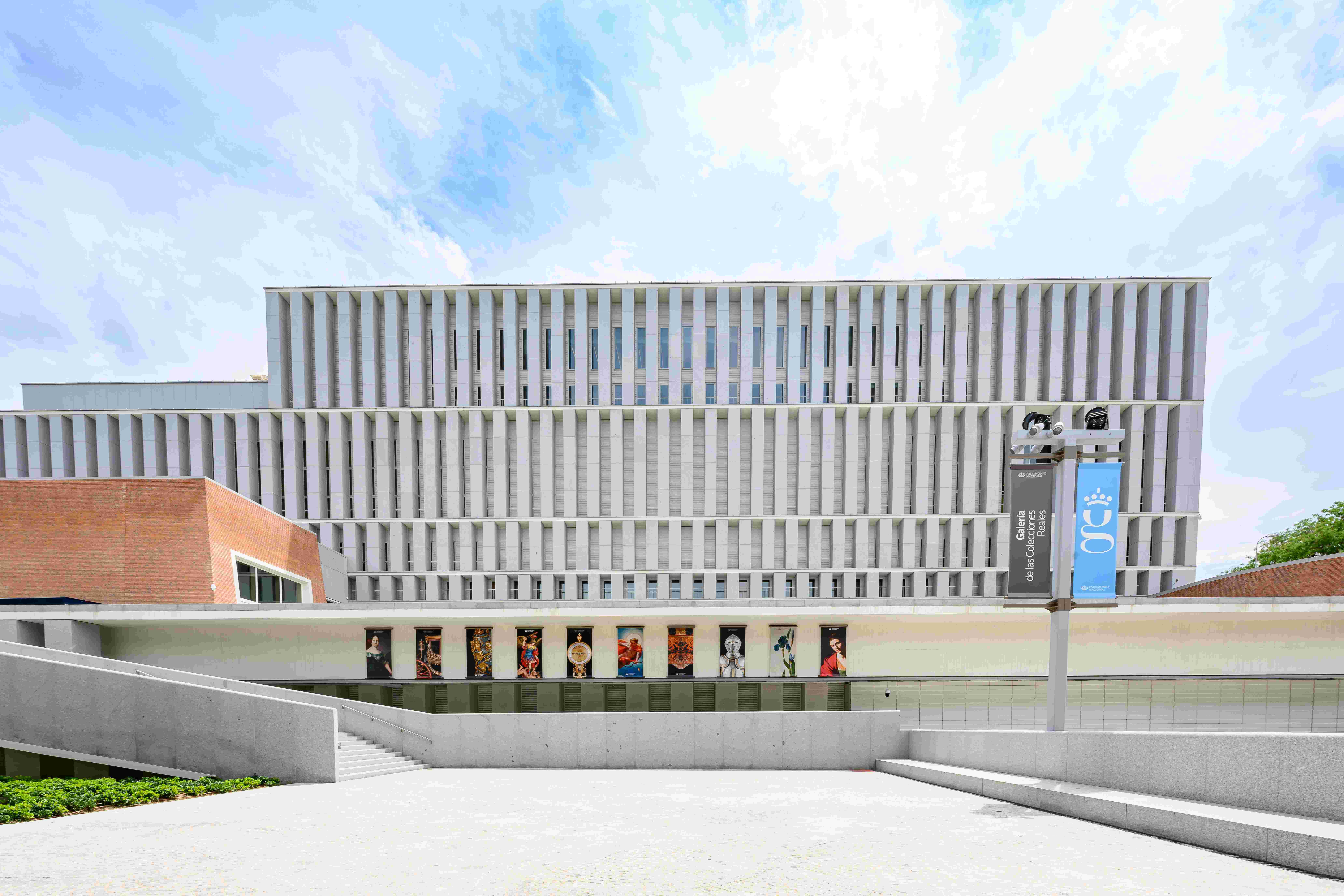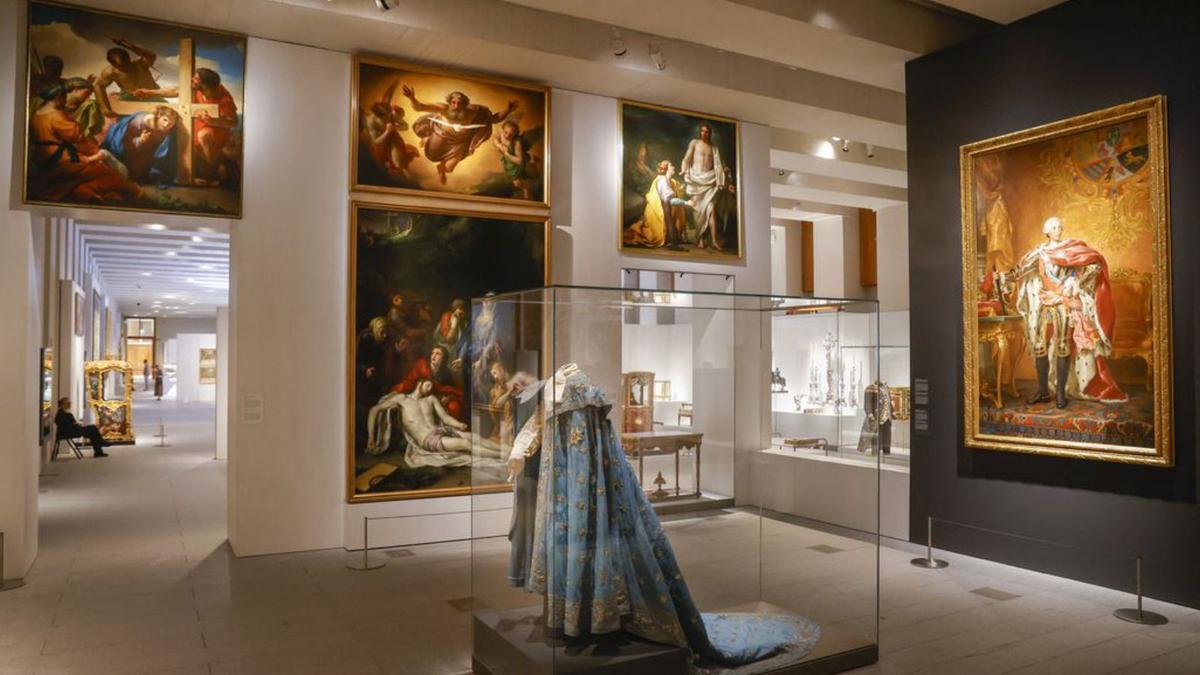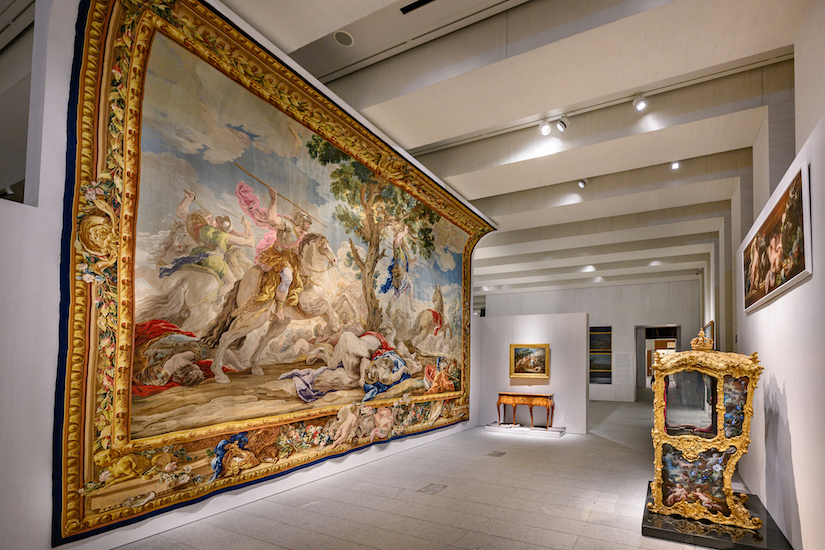In Madrid the new museum of the Royal Collections Galleries

Madrid’s new museum, the Gallery of Royal Collections, will be officially inaugurated, in the presence of King Felipe VI and Queen Letizia, on 25 July 2023, although it actually already opened its doors earlier this month.
The Gallery project, which began in 1998, brings together part of the immense heritage accumulated over the centuries by the sovereigns of Spain. It is a new museum housing 650 of the 170,000 works of art including tapestries, sculptures, armour, paintings, ceramics and carriages, a fountain and monumental columns. Now they finally become available for public viewing.
The Museum of the Royal Collections Galleries opens in Madrid

The treasures of the Museum of the Royal Collections Galleries constitute that part of the art objects that officially passed from the Crown’s ownership during the nationalisation of 1930 and the idea is to exhibit the historical-artistic wealth of Spain over five centuries of collections.
It is in fact a museum of museums, in which all the exhibits coexist with the contemporary building, which dialogues harmoniously with its contents.
THE MASTERPIECES OF THE MUSEUM OF THE ROYAL COLLECTIONS GALLERIES
The Museum building is adjacent to the Royal Palace, in the Plaza de la Armería, and develops vertically, from the ground floor to the lower ones, according to a chronological criterion.
The collection starts with the remains of the Arab walls from the 9th century A.D. up to the possessions of the Spanish kings of the House of Habsburg in the 16th and 17th centuries, including armour, tapestries and valuable paintings such as Caravaggio’s Salome or Velazquez’s White Horse.
The Bourbons have an entire room on the second level with various examples of decorative arts, tapestries, musical instruments and furniture, as well as important works by Mengs, Goya, Tiepolo, Paret and Maella.
The top floor, whose entrance is located on the Cuesta de la Vega, has been conceived as a more dynamic exhibition space where, in addition to the room reserved for temporary exhibitions, there is a large immersive cube in which 360° projections of the architectural and natural spaces of the Royal Sites will be realised.
FROM THE MUSEUM OF ROYAL COLLECTIONS GALLERIES TO THE ROYAL PALACE OF MADRID
The new museum represents only a part of the immense artistic, urban and cultural heritage that the Spanish Crown has left to Madrid, which is destined to be the city where the history and legacy of the royal family can be discovered.
In addition to the new museum of the Galleries of the Royal Collections, in fact, the city preserves the precious Royal Palace of Madrid, one of the largest in Western Europe with its more than 135,000 square metres and 4,418 rooms. To enter the Royal Palace is to take a journey through the history of Spain, although today it is no longer the residence of the current monarchs.
Also spectacular is the Changing of the Royal Guard, held every Wednesday and Saturday at the Puerta del Príncipe, or the even more spectacular Solemn Passage every first Wednesday of the month with sentries dressed in gala uniforms similar to those worn by the Spanish army at the time of Alfonso XIII.
For those who want a unique experience there is also the possibility of staying in the Royal Suite at the Mandarin Oriental Ritz hotel, a building steeped in history with a view of the Prado Museum. A few steps away is the Royal Theatre, designed by architect Antonio López Aguado during the reign of Isabella II: inaugurated in 1850, it is now one of the international temples of classical music.

THE ROYAL MADRID
Not far from the Royal Palace is also the Palacio de Liria, a large 18th century building, home to the Casa de Alba with its prestigious art collection and magnificent library containing more than 18,000 volumes and bibliographical gems. Among its most precious jewels is the unique collection of Christopher Columbus and the first edition of Don Quixote.
The journey through royal Madrid continues with a visit to the Prado Museum, which houses masterpieces of Spanish, Italian and Flemish art and has an extraordinary collection of 8,600 paintings and more than 700 sculptures. We then visit the Descalzas Reales Monastery, located in the former palace where Carlos I and Isabella of Portugal lived and where their daughter Juana, later founder of the convent, was born. Inside is a surprising wealth of 17th-century paintings and tapestries woven in Brussels to cartoons by Rubens.
A unique experience is to visit the Royal Tapestry Factory, which has been making carpets and tapestries by hand since the 18th century, preserving its roots in the Spanish textile tradition, and which today offers the opportunity to contemplate the craftsmen at work as they make and restore the Crown’s tapestries. The journey of discovery of the royal heritage also passes through the gardens and parks, created to entertain the monarchs and today essential places for visitors and Madrileños alike. The Sabatini Gardens, opposite the northern façade of the Royal Palace, are among the most beautiful in the ‘Madrid de los Austrias’; the Real Jardín Botánico, created next to the Prado Museum, is also spectacular. There is also Casa de Campo, a royal site used for hunting and recreation by the monarchy since 1562, and the Retiro Park, with its 125 hectares and more than 15 thousand trees, a Unesco World Heritage Site.
In Madrid, royal testimonies can also be found in the streets while shopping.
La Violeta, for example, is a family-run confectionery business opened in 1915 that has had King Alfonso XIII among its customers. Another important place is Capas Seseña, opened in 1901 near Puerta del Sol: here you can buy Spanish cloaks handmade according to traditional methods.
There is also a royal gastronomic Madrid: Lhardy is the first luxury restaurant in the capital; opened in 1839, in its more than 175 years of history it has been frequented by members of the Spanish royal family such as Isabella II. El Riojano is a patisserie founded in 1855 by a Madrilenian baker who worked for the royal family and which today retains its original decoration. Casa Mira, founded in 1855, is famous for its handcrafted nougat: its sweets became so popular that it became the supplier to the Royal House during the reigns of Isabella II and Alfonso XIII; the sixth generation of the Mira family still runs the factory, located in the very central Carrera de San Jerónimo.
Follow me on:
About me
In this blog, I don't explain the history of art — I tell the stories that art itself tells.


